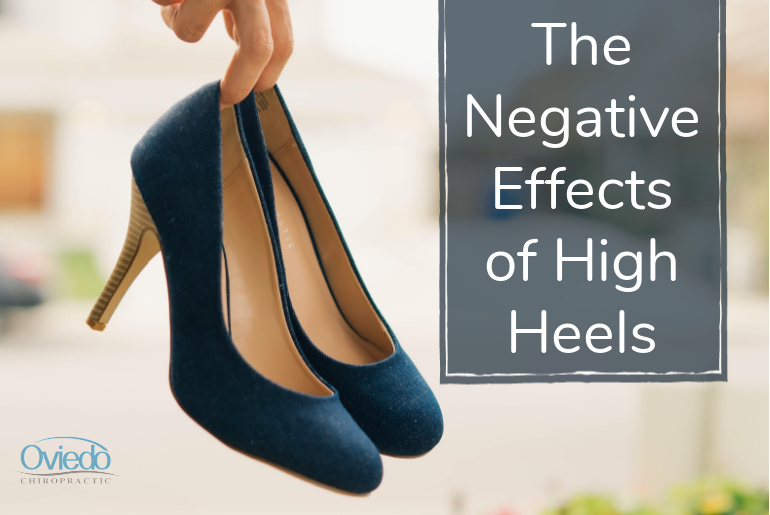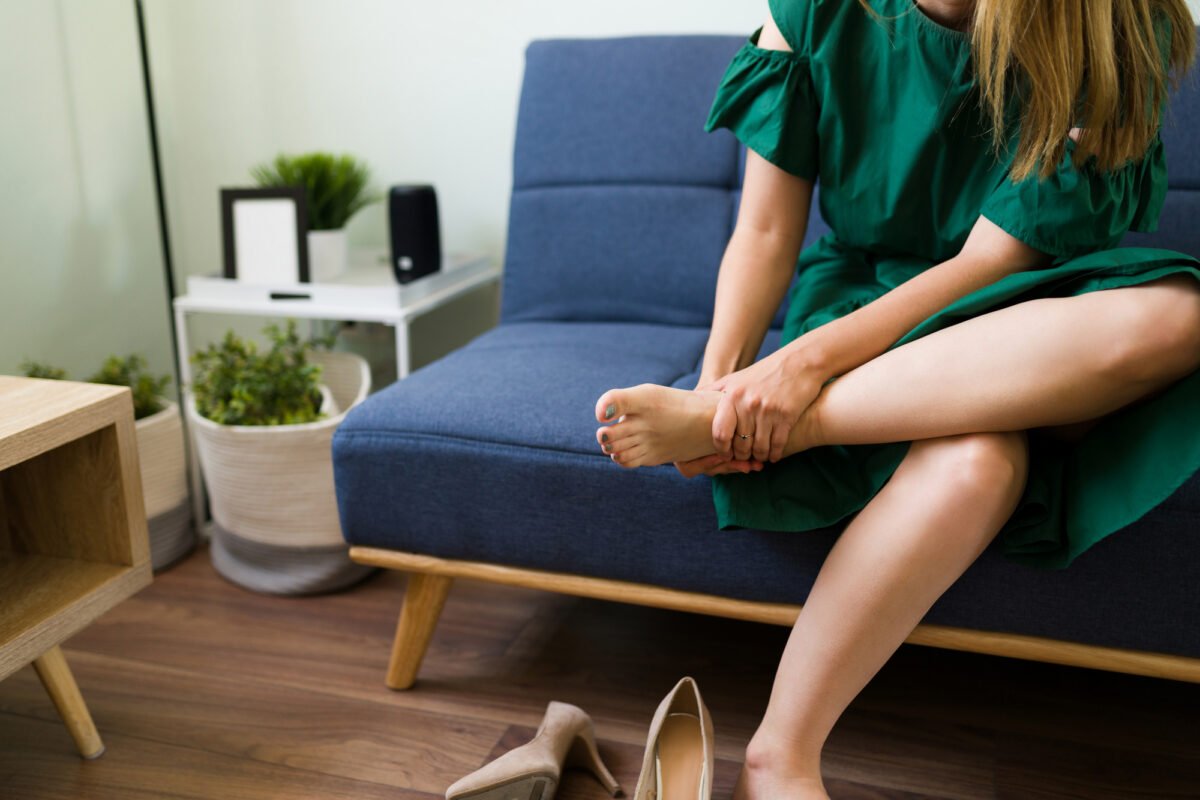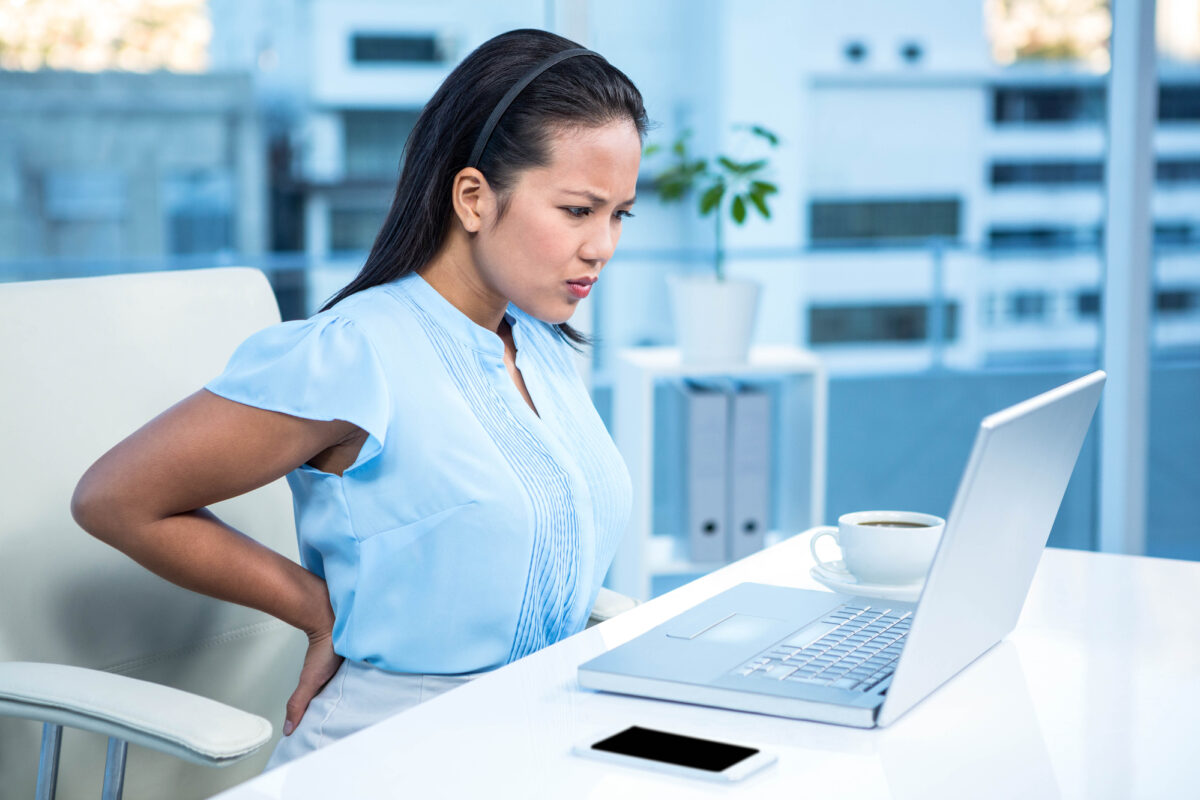The Negative Effects of High Heels

Those boots are made for walking, but not for your health!
Learn about the effects of high heels on your body and how you can prevent pain and injury.
Most women own at least one pair of high heels, and many of them wouldn’t be caught without a pair of stilettos, pumps, or platforms.
But while you’ve probably spent plenty of time thinking about how your shoes complement your outfit, have you given as much thought to how they affect your foot and ankle health?
As it turns out, the effects of high heels go way beyond fashion.
In this article, we’ll discuss what happens to your body when you wear high heels and how you can mitigate the negative effects (and still be stylish).
We Offer Same-Day Appointments
Are High Heels Bad For You?
A lot of research has gone into the mechanics of walking. Scientists, podiatrists, and shoe manufacturers have all spent countless hours studying the best way to get around on foot.
And there’s one thing that has been found to be universally true: high heels can wreak havoc on your body!
When you walk in heels, your weight is shifted forward. Rather than being evenly distributed across your entire foot, it’s concentrated on the balls of your feet. Why is this important?
Your heel is made of a single bone; it absorbs your weight and distributes it to the tarsal bones in your ankle. Your toes, on the other hand, are a collection of 21 smaller bones designed for flexibility rather than strength.
In short, your toes are simply not meant to carry your weight.

The Negative Effects of High Heels
Many conditions can claim high heel use as a primary cause, but we can group them into four major categories.
1. Foot Pain
Of all the negative effects of high heels, foot pain is usually the one you feel first.
But it isn’t just sore feet you need to worry about. When the ball of your foot is responsible for carrying your weight, you are more likely to develop blisters, corns, calluses, damaged or ingrown toenails, hammer toes, and even stress fractures.
2. Balance Issues
Do you remember how awkward you felt in your first pair of heels? It can be hard to balance when walking on your tiptoes. It’s especially difficult in stilettos, when the shoe’s heel is narrower than your foot.
When you wear high heels, your body’s center of gravity changes. And the higher the heels, the worse it gets.
Some of you may even have felt the need to practice walking in a new pair of shoes to become accustomed to the shift in your center of gravity.
Over time, you may be able to do this without any mental strain, but your muscles, tendons, and joints are still under the physical strain of walking in such an unnatural way. Furthermore, being off-balance makes ankle sprains, trips, and falls more likely.

3. Leg & Back Pain
Your feet aren’t just a way for you to get around, they’re the foundation for your entire body. And as any architect can tell you, when the foundation is compromised, the whole house is in jeopardy.
When you wear high heels, your lower body leans forward to balance on your toes, which means your upper body must lean backward to compensate. This posture places an excessive amount of stress on your knees, hip flexors, and lower back. Over time, joints can be pulled out of alignment.
If you wear high heels every day, your muscles and tendons (namely your Achilles tendon) can actually shorten and contract, making it difficult to walk—even in flats!
4. Arthritis
The unnatural gait and posture caused by walking in high heels can also cause pain later in life.
High heels put a lot of extra force on your knee and other joints. When these joints are forced to work harder, they wear down faster, causing osteoarthritis.
Ways to Cushion the Blow
If you’ve been wearing heels for a while, you’ll want to start taking some steps now to reduce the negative effects of your high heels and prevent future pain and foot problems.
Podiatrists recommend that your heels should be no more than two inches high. If you love the extra height that a super tall shoe gives you, stick with platform styles so that your foot stays relatively flat.

If you decide to switch to flat shoes, avoid “negative heels.” When you walk in flats, most of your body’s weight will be concentrated on the heel. In a soft, springy shoe, this might mean that your heel actually ends up lower than your toes.
And if you just can’t give up your Manolos long term, that’s okay. But make sure to give your feet a break every once in a while. Slip off your shoes a few times a day to stretch your toes and calf muscles. Wear flats for a day or two after a long day in heels. Or save the heels for parties and special events only.
Whatever shoes you favor, make sure they’re supportive and comfortable. Beware of shoes that pinch, rub, or are the wrong size. If you need to, add arch support or cushioned insoles for extra comfort and look for a toe box that accommodates your entire foot.
We Support You
For treating chronic foot issues—such as bunions or fallen arches—see a podiatrist. But for joint pain, see a chiropractor.
At Oviedo Chiropractic, we can work with your podiatrist’s recommendations to help alleviate your pain and realign your joints. You may have lived in stilettos and wedges for decades, but if you’d like to reverse the negative effects of high heels, make an appointment today.

